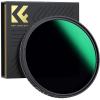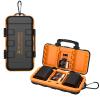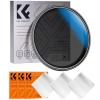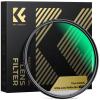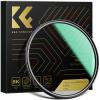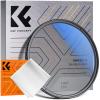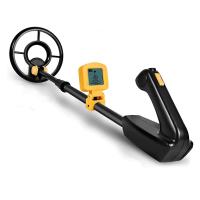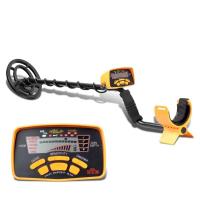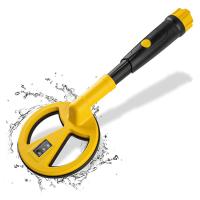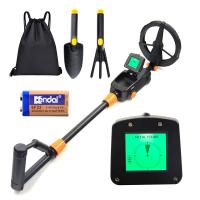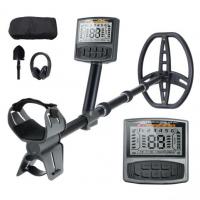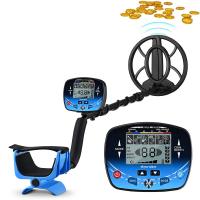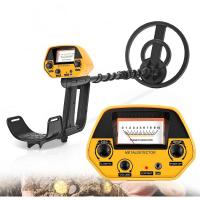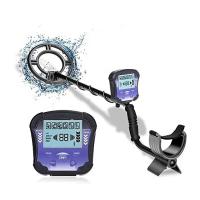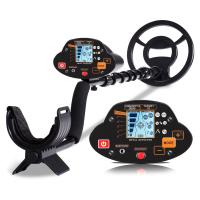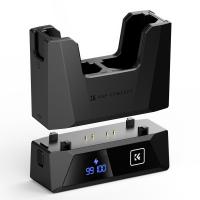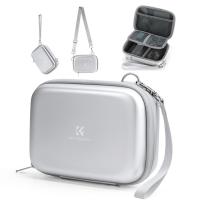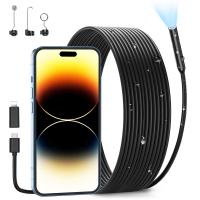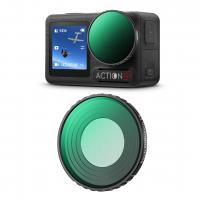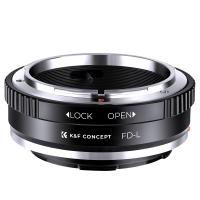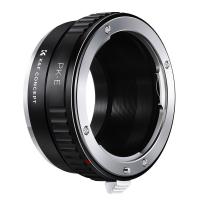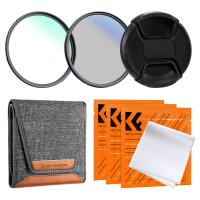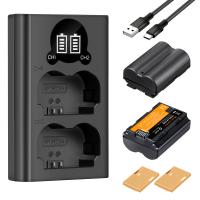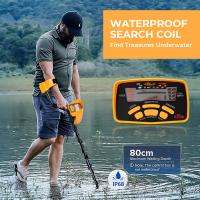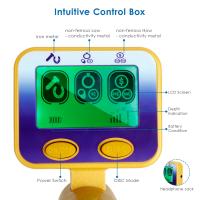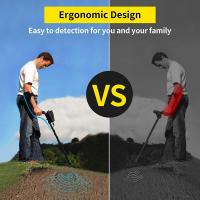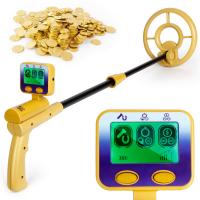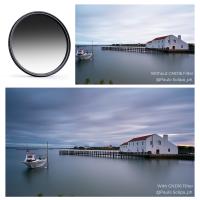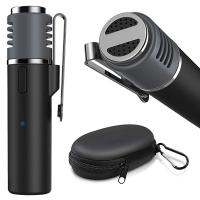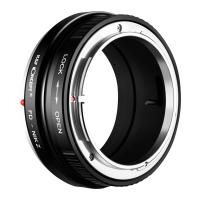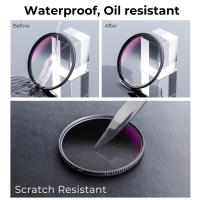Can A Metal Detector Detect Aluminum?
Metal detectors are fascinating devices that have captured the interest of hobbyists, security personnel, and treasure hunters alike. One common question that arises is whether a metal detector can detect aluminum. This question is particularly relevant given aluminum's widespread use in everyday items, from soda cans to foil wrappers. In this article, we will delve into the mechanics of metal detectors, explore their ability to detect aluminum, and provide practical insights for those interested in using metal detectors for various purposes.
Understanding Metal Detectors

To comprehend whether a metal detector can detect aluminum, it's essential to understand how these devices work. Metal detectors operate based on the principles of electromagnetism. They typically consist of a coil of wire (the search coil) through which an electric current is passed. This current generates a magnetic field around the coil. When the magnetic field encounters a metallic object, it induces an electric current in the object, which in turn generates its own magnetic field. The metal detector's receiver coil detects this secondary magnetic field and signals the presence of metal.
Types of Metal Detectors

There are several types of metal detectors, each with its own strengths and weaknesses:
1. Very Low Frequency (VLF) Detectors: These are the most common type of metal detectors. They operate at frequencies between 3 kHz and 30 kHz and are highly sensitive to a wide range of metals, including aluminum.
2. Pulse Induction (PI) Detectors: These detectors are less affected by ground mineralization and are often used in areas with high mineral content, such as beaches. They are also capable of detecting aluminum, although they are generally more expensive than VLF detectors.
3. Beat Frequency Oscillation (BFO) Detectors: These are the simplest and least expensive type of metal detectors. They are less sensitive and less accurate than VLF and PI detectors but can still detect aluminum to some extent.
Detecting Aluminum

Aluminum is a non-ferrous metal, meaning it does not contain iron and is not magnetic. However, it is still a good conductor of electricity, which makes it detectable by metal detectors. The ability of a metal detector to detect aluminum depends on several factors:
1. Frequency: VLF detectors, which operate at higher frequencies, are generally more sensitive to non-ferrous metals like aluminum. Lower frequency detectors may struggle to detect small aluminum objects.
2. Size and Shape: Larger aluminum objects, such as soda cans, are easier to detect than smaller items like aluminum foil. The shape of the object also plays a role; flat objects are generally easier to detect than irregularly shaped ones.
3. Depth: The depth at which an aluminum object is buried affects its detectability. Most metal detectors can detect large aluminum objects buried up to several feet deep, but smaller objects may only be detectable at shallower depths.
4. Ground Conditions: The presence of minerals in the soil can affect a metal detector's performance. Highly mineralized soil can interfere with the detector's ability to identify aluminum objects accurately.
Practical Applications
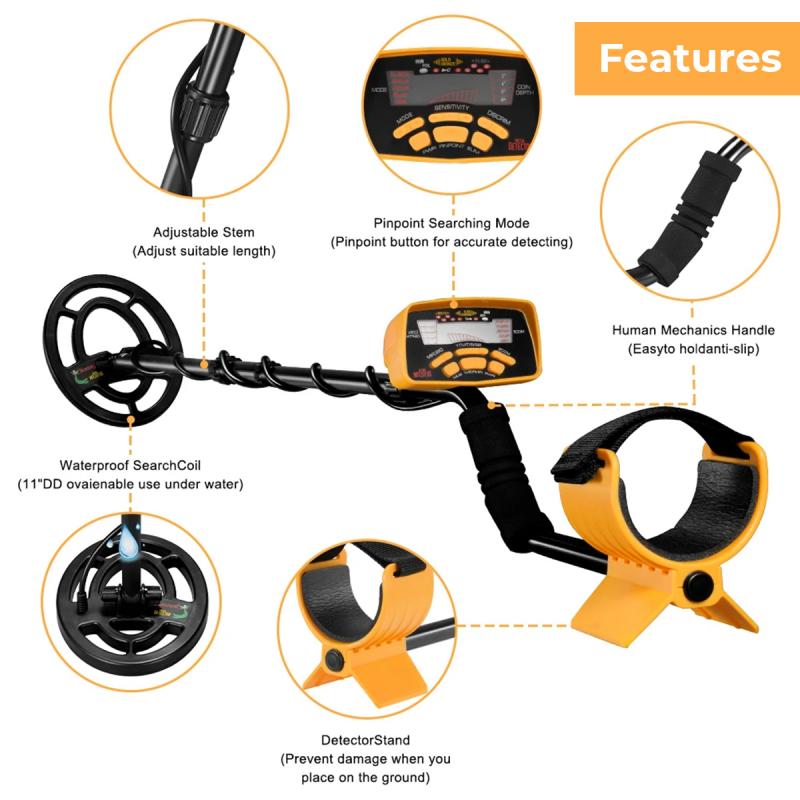
Understanding the ability of metal detectors to detect aluminum has practical implications for various activities:
1. Treasure Hunting: Hobbyists often use metal detectors to search for valuable items. Knowing that aluminum is detectable can help treasure hunters identify and differentiate between different types of metal objects.
2. Security Screening: Metal detectors are commonly used in security settings, such as airports and event venues, to detect prohibited items. Aluminum objects, such as beverage cans or foil-wrapped items, can be identified and inspected.
3. Recycling: Metal detectors can be used in recycling facilities to sort and identify different types of metals, including aluminum. This can improve the efficiency of the recycling process and ensure that valuable materials are recovered.
4. Archaeology: Archaeologists use metal detectors to locate artifacts buried underground. The ability to detect aluminum can help in identifying modern artifacts and distinguishing them from historical items.
Tips for Detecting Aluminum
For those interested in using metal detectors to find aluminum objects, here are some practical tips:
1. Choose the Right Detector: Opt for a VLF detector with a higher frequency range, as these are more sensitive to non-ferrous metals like aluminum.
2. Adjust Sensitivity Settings: Most metal detectors allow users to adjust sensitivity settings. Increasing the sensitivity can help detect smaller aluminum objects, but be mindful of potential interference from ground minerals.
3. Use Discrimination Features: Many metal detectors have discrimination features that allow users to filter out unwanted metals. Adjusting these settings can help focus on aluminum objects while ignoring other types of metal.
4. Practice Patience: Detecting aluminum, especially small objects, requires patience and practice. Take the time to learn how your metal detector responds to different types of metal and ground conditions.
5. Conduct Research: Before heading out to search for aluminum objects, conduct research on the area you plan to explore. Understanding the history and typical metal composition of the area can improve your chances of success.
In conclusion, metal detectors are capable of detecting aluminum, thanks to its conductive properties. The effectiveness of detection depends on factors such as the type of metal detector, the size and shape of the aluminum object, the depth at which it is buried, and the ground conditions. By understanding these factors and following practical tips, users can enhance their metal detecting experience and successfully locate aluminum objects. Whether for treasure hunting, security screening, recycling, or archaeology, the ability to detect aluminum adds valuable functionality to metal detectors and broadens their range of applications.

